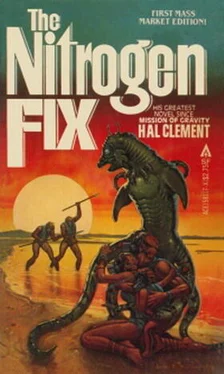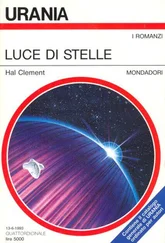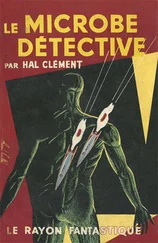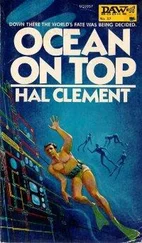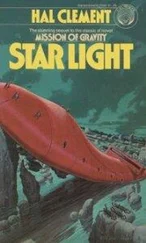The fact was, of course, that the group which had done the capturing was neither representative of the Hill population in general — as both Kahvi and Earrin were beginning to realize — nor particularly well organized. This was a consequence of the limited human communication faculties which Bones had so far come nowhere near to foreseeing. Both organization and its reverse where concepts which went with a population of individuals.
Bones, therefore, had time to learn much detail about the city. Unfortunately, none of it led to meaningful generalizations, even when combined with the several years close observation of the Nomad family. It was trivial stuff.
Eventually the researcher began to feel hungry. This was ordinarily a minor matter; practically any nitro-life that grew was acceptable food as long as reasonable balance was maintained between oxidizing and reducing vegetation. Inside Blue Hill’s caverns and corridors, however, there was no vegetation — the bioluminescent panels didn’t count. Thoughtful consideration of this problem suggested specific action.
There was oxygen in the city, since the people went unmasked. Therefore, there were plants — photosynthetic organisms, synthetic or otherwise, similar to those maintained by Kahvi and Earrin on their raft and the various places on land where they sometimes stayed. These plants would presumably be edible, or have edible parts — many of the pseudolife-forms contained nitrates, though it was perhaps a bit doubtful that these would be found inside a human city.
In any case, such plants would need sunlight; no other energy source could be available to human beings, judging by the Nomads’ attitude toward fire. Sunlight would be most available in the outer portions of the hill, and one way to get near the outside was to go up. As a matter of fact, both Kahviand Earrin had occasionally mentioned that the food and air sources of the cities were normally on the top levels.
Bones, therefore, began taking every upward-slanting tunnel that presented itself. This quickly changed the surroundings, though not for the reason which might have been expected.
Hemenway had not originally had an air plant section; the whole city was supplied from Great Blue Hill. The last few years, however, had brought changes.
The tunnels were brighter; there were more of the luminescent panels on walls and ceiling, and they appeared to be watered and fed more carefully. If Bones had possessed a sense of smell it would have been obvious that the air was fresher; even without it, there was a certain subtle difference in the environment. The area was lived in.
The impression was quickly supported more objectively. Within the same five minutes, Bones met two human beings. Both were adult, but considerably younger than Kahvi and her husband.
Both reacted to sight of the Observer by a rapid retreat, accompanied by high-volume use of their voices. Both retreated in the same direction; Bones was, of course, following the first when the second came on the scene. It seemed likely that they would lead the way to more interesting areas, so the Observer matched speeds with them instead of catching up as would have been so easy.
The chase went on for several minutes without the cries of the human beings eliciting any response.
Then an unusually steep upward ramp showed much brighter light at the top, light tinged with the golden color of sunlight filtered through an atmosphere containing distinct traces of nitrogen dioxide. Bones reached the foot of this slope just as the second of the people disappeared at the top, and started up without hesitation.
There was clearly something to see up here.
This proved correct, though the fleeing human beings had vanished. The sloping tunnel emerged at one side of a chamber some twenty meters square, roofed with the same transparent tissue used on the raft and the sail — Bones did not know the difference in the latter building. As with the jail, the tissue was supported at frequent intervals by thin beams — mere poles — of realwood. The sun was a brassy patch visible high in the south; only a few clouds showed in the golden sky.
The room contained at least two dozen tables of the sort which carried plant trays in the jail, and most of these did carry flat, bubble-topped boxes in which growths of various shapes and colors could be seen. Few of these, however, bore close resemblance to the oxygen and nitrogen producers Bones knew from raft life. A few had the green of chlorophyll, but most were of strange reds, browns, and yellows. They might have been transplanted from among the nitro-life forms which covered most of the world outdoors, though it was hard to imagine Hillers doing such a thing, and the shapes of the organisms were mostly unfamiliar.
There were also vats and tanks full of variously colored liquids. Some of these also held plants; the others might represent cultures of microscopic real- or pseudo-life. The place might have been a laboratory, though that was also hard to imagine of Hillers.
There were doors in all the walls; the light beyond them indicated that they led to rooms which also had transparent ceilings. It appeared that Bones was at the top of the hill. Human voices sounded loudly, apparently through several of the doorways. The fleeing human beings had been out of sight when the Observer reached this level; there was no way to guess which opening they had used. It didn’t seem to matter much; there was plenty to keep an Observer occupied for hours in this room alone.
For one thing, some of the growths were probably edible. This seemed as good a time as any to find out, since Bones felt an increasing need for food. Two long tentacles, terminating in four digits the size of a grown man s little finger, lifted the bubble-shaped transparent top from the nearest table, placed it carefully on the stone floor, and began to remove the orange objects, the size and shape of hen’s eggs, from the branches of the growth within.
Taste, to Bones, was neither “good” nor “bad.” The material had little if any nitrate, but was adequate for the reducing portion of Observer diet. The nonhuman consumed all the objects, replaced the bubble cover on the planter, and went on to the next. And the next. Why there was time for so much eating was never clear; the human voices in the nearby rooms kept up their chattering. They rose and fell — the ideaof argument was of course completely foreign to Bones — but the fourth lid was just being removed when action finally replaced words. Fully a score of people suddenly poured through the various doors and spread out inside.
They were still chattering — or rather, a few of them were; the others maintained silence and simply looked at the intruder. All carried implements which Bones had never seen before. They were rods, apparently of realwood like the roof poles, about a meter and a half in length, somewhat like the fire sponges. Their ends, however, bore glass blades much thinner at the edges than Earrin’s knives, ending in sharp tips, and symmetrical on either side of the axis defined by the wooden handles. Bones had never seen a spear or any other kind of weapon; presumably these things were tools, but their function was completely obscure. For just a moment. Then one of the human beings uttered a sharp syllable, and eight of the creatures raised the weapons and hurled them at the Observer. It did not occur to the latter to dodge; fortunately the Hillers were almost as unpracticed with the devices as their intended victim. Only one shaft struck its target directly, though the others came close enough to suggest that dodging would probably have been ineffective anyway.
The one point caught the fishlike form a few centimeters below the top of the lateral fins and just in front of the left one. It emerged behind the other at about the same height, proceeded for about half the weapon’s length, and left Bones standing transfixed by the spear as effectively as though its wielder had been practicing for years.
Читать дальше
